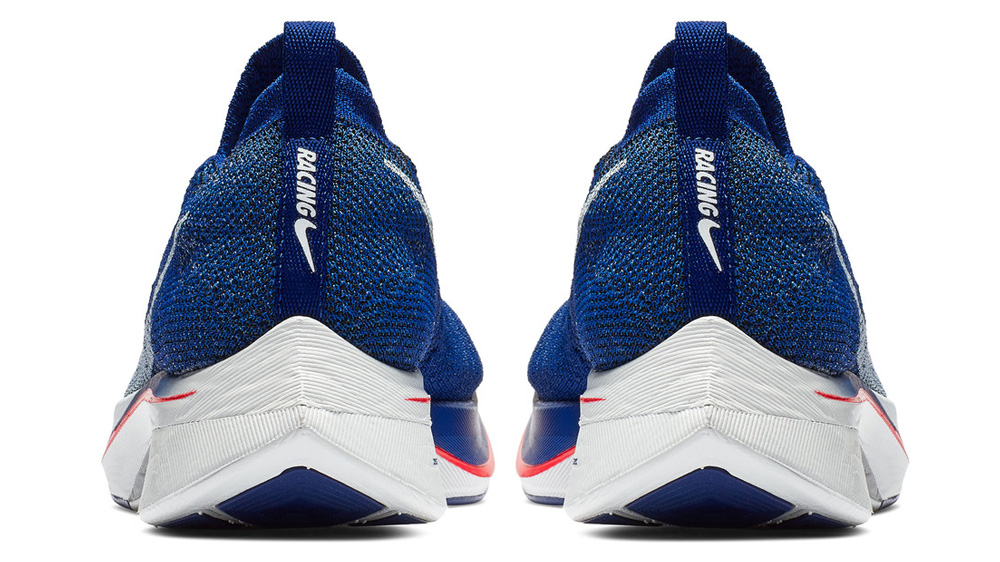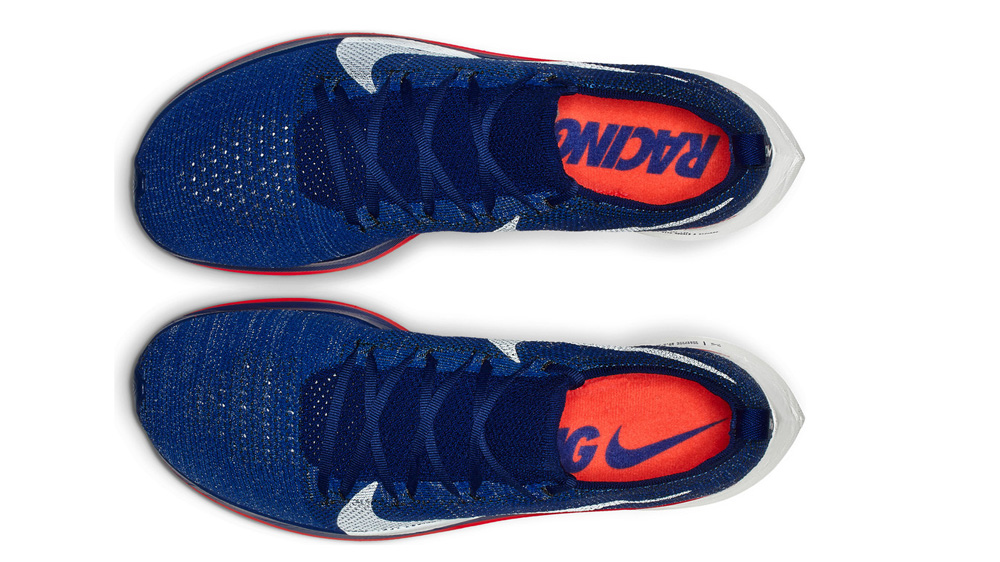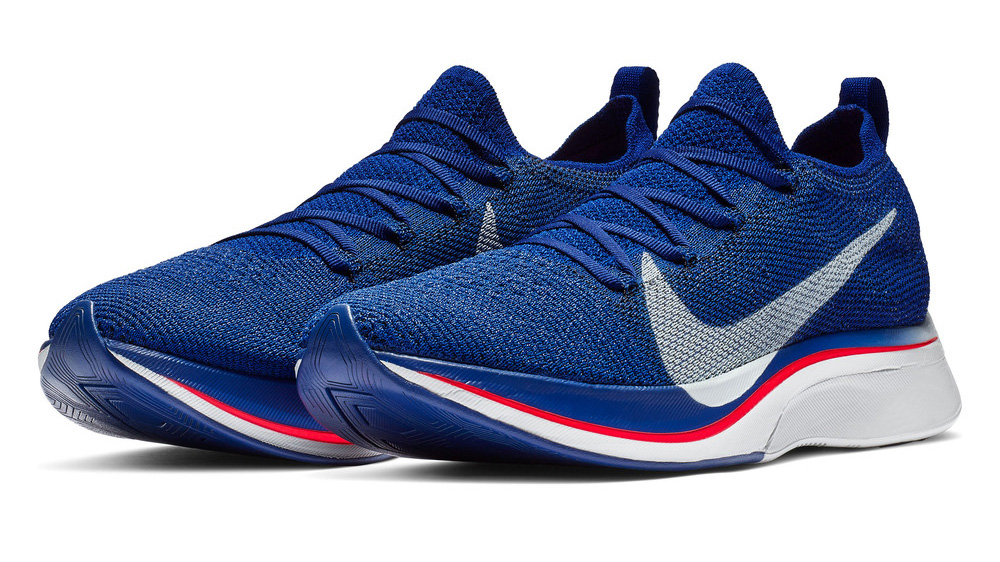For
- Springy ZoomX midsole with carbon plate
- Increases running efficiency
- Great for races of any distance
Against
- Not that durable
- Expensive
You can trust Coach
If you keep seeing the same model of running shoes on your fellow local runners’ feet, it’s normally a reliable indicator that it’s a good option. When you see many of the best in the world wearing the Nike Zoom Vaporfly 4%, it’s a safe bet that it’ll be the best option out there. Seven of the 12 winners of the World Marathon Majors were wearing some version of the Vaporfly, as were 23 of the 36 podium finishers, including the fastest three men in New York, Chicago and London.
One of those athletes was Eliud Kipchoge, who destroyed the world record for the marathon in Berlin, running 2hr 1min 39sec. The world record for the half marathon also went in 2018, with Abraham Kiptum running 58min 18sec in Valencia while wearing – you guessed it – the Vaporfly.
It’s not only pros who have revelled in using the shoe – the distinctive bright crimson of the first version of the Flyknit Vaporfly is a common sight on start lines. Last year the New York Times looked at race data for over 500,000 marathon and half marathon runners and found that the fabled 4% boost provided by the shoe seemed to be borne out by real-world results.
I ran a marathon PB in 2018 wearing the Vaporfly (the first version of the shoe). The updated Flyknit Vaporfly introduces Nike’s signature knit to the shoe to create a lighter, more breathable upper compared with the first version, leaving the sole unchanged. And given all of the above, why would you change it? The combination of a stack of Nike’s lightweight, springy ZoomX foam and a carbon plate is a proven winner, and running in the Vaporfly is unlike anything else I’ve ever tried.

It feels downright strange to take your first few steps in the shoe, which feels soft and incredibly bouncy. The claimed 4% improvement you get from the shoe comes from a consequent increase in your running efficiency, in that you expend less energy to run at the same pace in the Vaporfly as you would in other shoes.
It’s not an easy claim to test at an individual level, since PBs for almost all runners are based on an unknowable combination of a successful training plan and the stars aligning on the day of the race itself. I did find, however, that my heart rate was lower than expected when I ran in the Vaporfly. This was most apparent when I did two flat 16km runs one week apart, the latter in the Vaporfly, when I ran around 15 seconds quicker per kilometre and logged the same average heart rate.
It’s just one anecdote and completely meaningless when it comes to checking the shoe’s credentials – maybe I was just having a good day the second time around. However, it definitely fed into my overall impression of the Vaporfly, which is that running fast just feels easier in it. That’s a special characteristic for a racing shoe, especially over 42.2km.

The new Flyknit upper shaves a few grams off the total weight. The fit is fairly roomy for a racing shoe, especially around the toe box, but it’s still true to size – going half a size down cramps the toes slightly. I’m not convinced the Flyknit is an advance on the first Vaporfly’s upper in terms of the fit – both are good. Either way, you don’t buy this shoe for the upper.
There are downsides to the Vaporfly 4%, chiefly that it’s not especially durable. After 200km of hard running the shoe is widely reported to lose some of its magic, so it’s one to tuck away in the wardrobe until your biggest race days. That makes the £209.95 price hard to swallow, because shelling out that much on a shoe you’ll rarely use feels terrifying (especially if you have to explain why you’ve done so to a partner who doesn’t run).
Whether it’s worth it is obviously a personal call, but at least the shoe lives up to its hype, which is notable given just how much hype there is around it. And now, if you do decide it’s worth the money you can at least find it – the Vaporfly 4% is more widely available since a second colourway was launched, whereas in the past most retailers were always sold out. Although, fair warning, that might also be due to rumours of a new Vaporfly starting to float around and people holding off to see if a better model is announced shortly. Take a look at the best Nike shoes and the best marathon shoes before making your decision.
The Vaporfly 4% is an outrageously good running shoe with an outrageous price to match. However, it’s important you don’t buy the shoe expecting miracles. It’s the best shoe I’ve ever run in, but any PBs you get in it are going to be down to training hard, racing smart and enjoying a slice of luck when it comes to injuries, weather and all the other factors that can scupper a PB bid.
Buy from Sports Shoes (unisex) | £209.95

Nick Harris-Fry is a journalist who has been covering health and fitness since 2015. Nick is an avid runner, covering 70-110km a week, which gives him ample opportunity to test a wide range of running shoes and running gear. He is also the chief tester for fitness trackers and running watches, treadmills and exercise bikes, and workout headphones.


